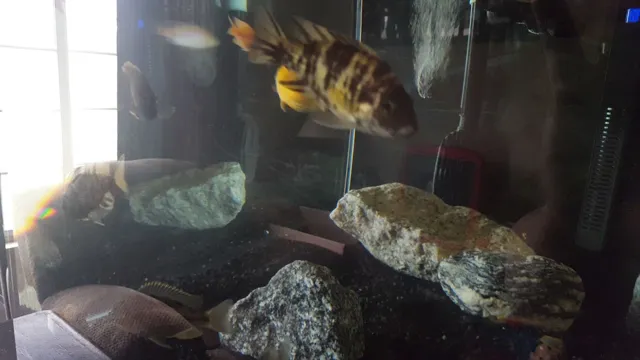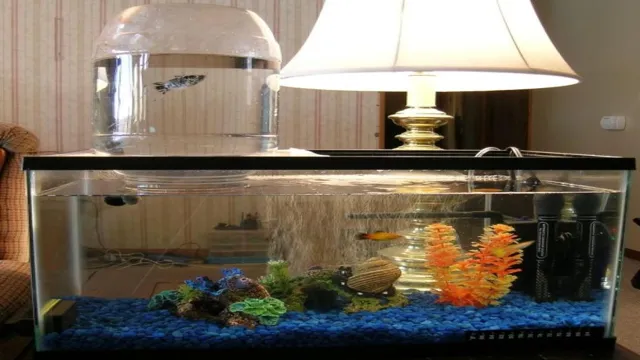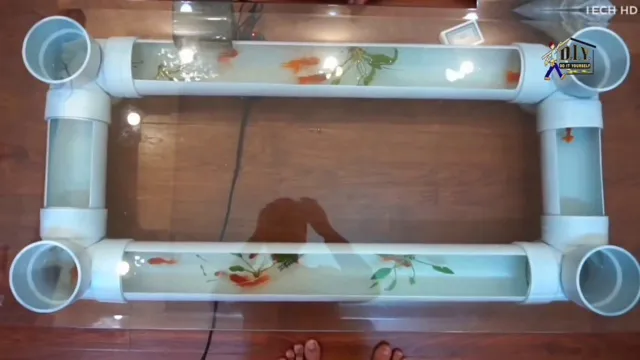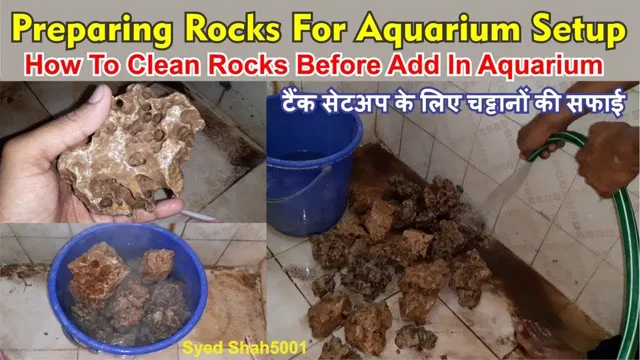Have you ever looked at your beloved aquarium and noticed scratches on the glass? It’s a common problem that many aquarium owners face, but don’t fret – there are ways to hide or even remove the scratches. Scratches can not only be unsightly, but they can also be a breeding ground for algae and other unwanted substances. That’s why it’s essential to tackle this issue as soon as possible.
In this blog post, we will explore the various methods you can use to hide scratches in your aquarium glass, ensuring your underwater world remains beautiful and unblemished. So, let’s dive in!
Causes of Aquarium Glass Scratches
When it comes to aquarium glass scratches, prevention is the best solution. However, accidents do happen, and even the most careful aquarist may find scratches on their beloved tank. Aquarium glass scratches can be caused by a number of things such as cleaning with abrasive material, scraping against hard surfaces, or even fish and other aquatic creatures.
These scratches can not only be an eyesore but can also affect the clarity of the water. Fortunately, there are ways to hide scratches in aquarium glass. One solution is to use a scratch removal kit.
These kits come with different grits of sandpaper and polishing compounds to gently rub out the scratches. Another option is to use aquarium-safe silicone sealant to fill in the scratches and provide a smooth surface. Whatever solution you choose, make sure to do your research and follow the instructions carefully to avoid causing further damage to your aquarium.
Improper Cleaning Techniques
Improper cleaning techniques can lead to aquarium glass scratches, which can detract from the beauty of your fish tank. One common cause of scratches is using rough or abrasive materials to clean the glass. This includes using sponges, scrub brushes, or even paper towels.
These materials can create micro-scratches that accumulate over time and become more noticeable. Additionally, using harsh chemical cleaners can also damage the glass. It’s best to use a specialized aquarium glass cleaner and a soft, non-abrasive cloth to wipe down the glass.
Regular maintenance can prevent scratches and keep your aquarium looking its best. By taking care when cleaning your fish tank, you can ensure that it remains a beautiful and healthy home for your aquatic pets.
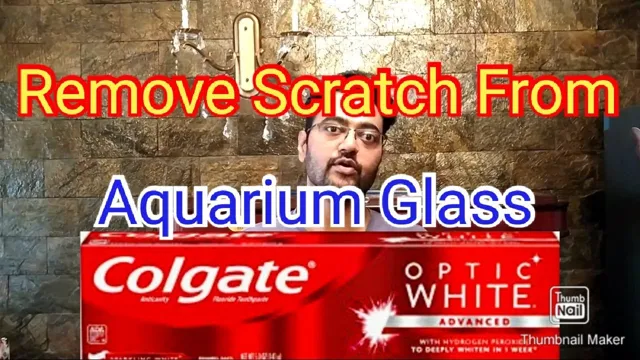
Hard Water Stains
Hard water stains are a common issue when it comes to maintaining an aquarium. However, scratched glass can also be a problem for aquarium owners. The causes of scratches can be numerous, ranging from improper cleaning methods, to using sharp objects or materials that could scratch the glass.
However, one of the most common causes of aquarium glass scratches is the buildup of hard water stains. These stains are caused by minerals in the water that build up on the glass over time and can be difficult to remove. As a result, when cleaning your aquarium, it is important to use only the proper cleaning materials and techniques to prevent scratches and ensure the longevity of your aquarium’s glass.
Tools Needed to Hide Scratches
If you’re wondering how to hide scratches in your aquarium glass, there are a few tools you will need to make it happen. Firstly, you will need a polishing kit that contains a buffing wheel and a polishing compound. You can find these kits at your local hardware or automotive store.
Once you have your kit, you will also need a power drill to attach the buffing wheel to. Secondly, you will need a masking tape to outline the areas where you want to keep the polishing compound. This will prevent the compound from spreading too much and scratching other areas of the aquarium glass.
Lastly, you will need a microfiber towel to clean off any leftover residue once you’ve completed the buffing process. With these tools in hand, you’ll be able to hide scratches in your aquarium glass in no time!
Microfiber Cloth
If you’re looking for a quick and easy way to hide scratches on your car, then a microfiber cloth is a must-have tool. Not only is it gentle on your vehicle’s paint, but it’s also great at removing swirl marks and light scratches. To use it properly, start by gently cleaning the scratched area with a mild soap and water. (See Also: How to Freshwater Aquarium Plants: A Step-by-Step Guide for Beginners)
Then, dry the area thoroughly with the microfiber cloth. Once the area is clean and dry, apply a small amount of rubbing compound to the scratch using the microfiber cloth. Rub gently in a circular motion until the scratch is no longer visible.
Finally, use the cloth to wipe away the excess compound and buff the area to a shine. With a little bit of elbow grease and a microfiber cloth, your car will look as good as new in no time.
Cerium Oxide Polish
Cerium oxide polish is a very effective tool for hiding scratches on various surfaces such as glass, ceramic, and even some metals. However, before you start, you must gather the necessary tools. First, you’ll need a microfiber cloth to clean the surface and remove any debris or dirt.
Next, you should have a cerium oxide polish and a polishing pad that can be attached to a drill or rotary tool. This will help you apply the polish evenly and aggressively enough to do the job. You may also need masking tape to protect any surrounding areas that you don’t want to accidentally scratch or polish beyond what’s needed.
Lastly, a soft-bristled brush will come in handy for removing the excess polish and restoring the surface’s shine. With these tools in hand, you’ll be on your way to hiding scratches like a pro using cerium oxide polish.
Step-by-Step Guide to Hiding Scratches
Aquariums, with their serene and colorful display of aquatic life, are a beautiful addition to any home or office. However, scratches on the glass can detract from the overall aesthetic. Fortunately, there are steps you can take to hide those pesky scratches.
First, determine the severity of the scratch. For superficial scratches, try using toothpaste or baking soda mixed with water to buff out the scratch. For deeper scratches, opt for a glass polishing kit, which can fill in the scratches and make them less noticeable.
Finally, to prevent future scratches, avoid using abrasive materials when cleaning the glass and be careful when moving decorations or equipment in the tank. By following these tips, you can have a beautiful and scratch-free aquarium that will continue to bring you joy for years to come.
Step 1: Clean the Glass
One of the most frustrating things for homeowners is seeing scratches on their windows, especially if they’re in a prominent location or obstructing their view. Thankfully, there are ways to hide those scratches and restore your windows to their former glory. The first step in this process is to clean the glass thoroughly.
This may seem like a no-brainer, but many people forget this crucial step. The cleaner the glass, the easier it will be to hide the scratches and ensure a seamless finish. Use a high-quality glass cleaner and a microfiber cloth to wipe down the entire surface of the window.
It’s important to remove any dirt, dust, or debris from the glass, as this can interfere with the effectiveness of the scratch-removal techniques that follow. Once the glass is sparkling clean, you can move on to the next step in the process.
Step 2: Apply Cerium Oxide Polish
After cleaning your car, the next step in hiding scratches is to apply cerium oxide polish. This polish is designed to remove surface scratches, scuffs, and stains from the paintwork of your vehicle. Apply a small amount of polish to a microfiber cloth and gently rub it onto the scratch in a circular motion, working across the entire length of the scratch, until the polish starts to dry.
You should focus on one section at a time, and remove any excess polish with a clean cloth as you go. This will ensure that the polish does not dry and become difficult to remove. After you have applied the polish, use a clean microfiber cloth to buff the area and bring out a high shine.
With this simple step, you can effectively hide scratches on your car and bring back its original appearance. (See Also: How to Check TDS in Aquariums: A Step-By-Step Guide for Optimum Water Quality)
Step 3: Buff the Glass
After sanding off the scratches and applying the cerium oxide polish, the final step to hiding glass scratches is buffing the glass. This step will give your glass a shiny and smooth finish, making the scratches less noticeable. To begin, use a soft cloth or buffing pad to apply a good quality glass cleaner or alcohol to the glass surface.
Next, using a circular motion, buff the glass surface until it is polished to a high shine. Remember to use even pressure and consistent speed during this process to achieve the best results. Finally, wipe the glass surface down with a microfiber cloth to remove any excess cleaner or residue.
This step is crucial to ensuring that your glass surface looks brand new and scratch-free. With patience and attention to detail, anyone can easily hide scratches on their glass surfaces using these simple steps.
Preventative Measures to Avoid Scratches
Aquarium glass can easily get scratched, either by accidental knocks or by the presence of hard debris on the surface. However, there are preventative measures you can take to avoid scratches in the first place. First, ensure that any hard objects in the aquarium, such as rocks or decorations, are thoroughly cleaned before placing them in the tank.
Secondly, avoid using anything abrasive to clean the aquarium glass, such as steel wool or harsh brushes. Instead, use a soft cloth or sponge and a gentle cleaning solution. Finally, be mindful of where you place the aquarium and how it is handled, minimizing the risk of accidental knocks or bumps.
By taking these preventative measures, you can avoid the need to hide scratches on aquarium glass altogether. However, if scratches do occur, consider using a glass polishing kit specifically designed for aquarium use to minimize their visibility.
Use a Soft Sponge or Cloth
When it comes to preventing scratches on your surfaces, one of the simplest steps you can take is to use a soft sponge or cloth for cleaning. This may seem like common sense, but many people reach for abrasive materials like scouring pads, steel wool, or even rough towels without realizing that they can do more harm than good. It’s important to remember that even seemingly minor scratches can accumulate over time and ultimately lead to more serious damage.
By using a soft sponge or cloth instead, you can clean effectively without risking scratches. Plus, it’s a gentle and eco-friendly option that can help you maintain the longevity and appearance of your surfaces. So, next time you’re cleaning your dishes or wiping down your countertops, opt for a soft sponge or cloth and give your surfaces the TLC they deserve.
Avoid Using Harsh Chemicals
If you want to prevent scratches on your surfaces, one of the best preventative measures you can take is to avoid using harsh chemicals. Many household cleaners contain ingredients that can easily scratch or damage surfaces like wood, granite, or stainless steel. It’s always a good idea to check the label of your cleaning products and verify that they are safe to use on the surfaces in your home.
Even if a cleaner is labeled as safe for a particular surface, it’s always best to err on the side of caution and avoid using it too frequently. Over time, even the gentlest of cleaners can cause damage if used excessively. If you want to keep your surfaces looking like new, stick to non-abrasive cleaners and cleaning tools.
By taking the time to choose your cleaning products wisely, you can help prevent scratches and preserve the beauty of your surfaces.
Place Mats Underneath Aquariums
One of the biggest concerns for aquarium owners is how to prevent scratches on the surfaces underneath their tanks. While it may seem like a small issue, scratches can be unsightly and can accumulate over time. To avoid this problem, it’s important to take preventative measures.
One such measure is to use place mats under the aquarium. Place mats can protect the surface underneath the tank from scratches, while also providing a cushion for the weight of the tank. When choosing a mat, it’s important to find one that is durable and thick enough to provide ample protection. (See Also: How to Go to Sea Aquarium from VivoCity: A Quick and Easy Guide)
By taking this simple step, aquarium owners can ensure that their tanks remain in excellent condition, without the worry of scratches detracting from their beauty and functionality.
Conclusion
In the world of aquariums, scratches are like scars – they tell a story of the life and adventures of your fishy friends. But sometimes, you just want to hide those battle wounds and give your tank a fresh and flawless look. So, whether you use toothpaste, baking soda, or a professional scratch-removal kit, remember that the real magic is in accepting and loving your aquarium for all its imperfections.
After all, your aquatic pets don’t care about scratches – they only care about having a safe and comfortable home. So, let’s embrace the beauty of our aquariums, scratches and all, and let them be a symbol of our love for nature and its fascinating inhabitants. Happy fishkeeping!”
FAQs
What are the common causes of scratches on aquarium glass?
Some common causes include using abrasive material for cleaning, accidentally dropping hard objects onto the glass, and the movement of rocks or substrate within the tank.
Is it possible to remove scratches on aquarium glass?
Yes, it is possible to remove minor scratches using scratch removal kits or by buffing the affected area. However, deep scratches may not be repairable and require replacement of the glass panel.
Can scratches on aquarium glass affect the health of aquatic animals?
It depends on the severity of the scratches. Minor scratches usually do not affect the health of aquatic animals, however, deep scratches can harbor harmful bacteria which can lead to diseases and infections.
What are some ways to prevent scratches on aquarium glass?
Avoid using abrasive materials for cleaning, handle objects with care, and consider placing a protective layer over the bottom of the tank.
Are there any temporary methods to hide scratches on aquarium glass?
Yes, applying a coat of vaseline or petroleum jelly can temporarily hide minor scratches, but it is recommended to address the issue by repairing or replacing the affected glass panel.
How much does it cost to replace a scratched aquarium glass panel?
The cost varies depending on the size and thickness of the glass panel and can range from $50 to $500.
Can scratches on aquarium glass affect the aesthetic appeal of the tank?
Yes, scratches on the glass can ruin the overall appearance of the tank and detract from the beauty of the aquatic environment.

